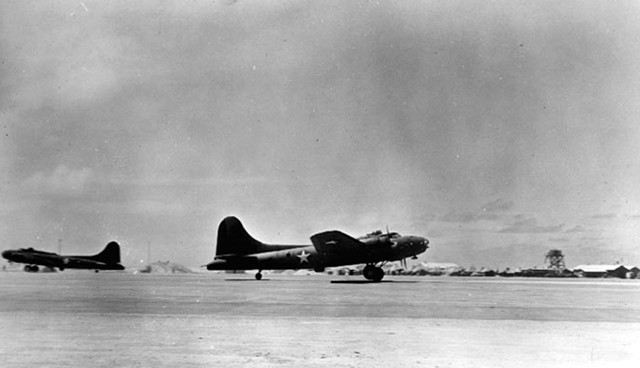June 03, 2010

Nine B-17s took off from the runways of Midway's Eastern Island around 1230pm on June 3rd. After a flight of about three hours, they found the transports of the Imperial Japanese Navy's Midway Occupation Force, tasked to effect the actual invasion of the atoll, approximately 500 miles to the west. The B-17s claimed multiple hits on the lumbering transports, though managed none whatsoever, despite a total absence of CAP and effective antiaircraft fire.
Meanwhile, a thousand miles or more to the northeast of Midway, two light carriers of the IJN (the Ryujo and the Junyo) launched an attack on Dutch Harbor, Alaska. 12 Zero fighters, 10 Val dive bombers and 10 Kate torpedo bombers (operating in horizontal bombing mode) lifted off from the tiny flight decks in miserable weather. This attack caused minor damage to oil storage tanks and the local radio station, while some bombs hit the barracks of Ft Mears, killing 25 soldiers.
The attack on the Aleutian Islands has often been called a diversionary assault, intended to draw out the American fleet from Pearl Harbor. It turns out that that is not the case. Both the attack on Midway and the attack on the Aleutians were supposed to begin on June 3rd, but the carrier fleet tasked for the Midway part of the attack were delayed by a day by refueling problems.
Late in the night of June 3rd, four PBY flying boats of Patrol Squadron 44 took off from the seaplane base at Midway, headed for the Occupation Force. Early the next morning, one of them put a torpedo into the bows of the fleet oiler Akebono Maru. Damage was relatively light, and the ship continued underway with little delay. This was the only successful torpedo attack by the Americans for the entire battle.
The opening volleys of the most decisive naval victory in history had been fired; the next day would belong to the carriers.
Posted by: Wonderduck at
07:01 PM
| Comments (5)
| Add Comment
Post contains 407 words, total size 3 kb.
During WWII most American fighter planes were armed with M2 Browning HMG. Because the Japanese planes were firetraps, the American planes were armed with 50% armor piercing rounds and 50% incendiary, alternating on the feed belts.
Against the Japanese that made a lot of sense. You needed the AP in order to do damage to engines if you hit them. But the incendiary rounds were just the ticket if you were hitting fuel tanks on wings.
Did the US use the same 50/50 belts in Europe against the Germans? Or did they use 100% AP?
Posted by: Steven Den Beste at June 04, 2010 08:26 PM (+rSRq)
Posted by: Wonderduck at June 04, 2010 10:07 PM (iJfPN)
Posted by: Will at June 06, 2010 09:07 AM (+tm6w)
Posted by: Steven Den Beste at June 06, 2010 11:03 AM (+rSRq)
When the Flying Fortresses attacked Kido Butai the next day, they came in at 20000+ feet. They were spotted early, and they again scored no hits, though Hiryu was bracketed by near misses that landed within her own length away.
Posted by: Wonderduck at June 06, 2010 11:16 PM (iJfPN)
47 queries taking 0.4576 seconds, 281 records returned.
Powered by Minx 1.1.6c-pink.









